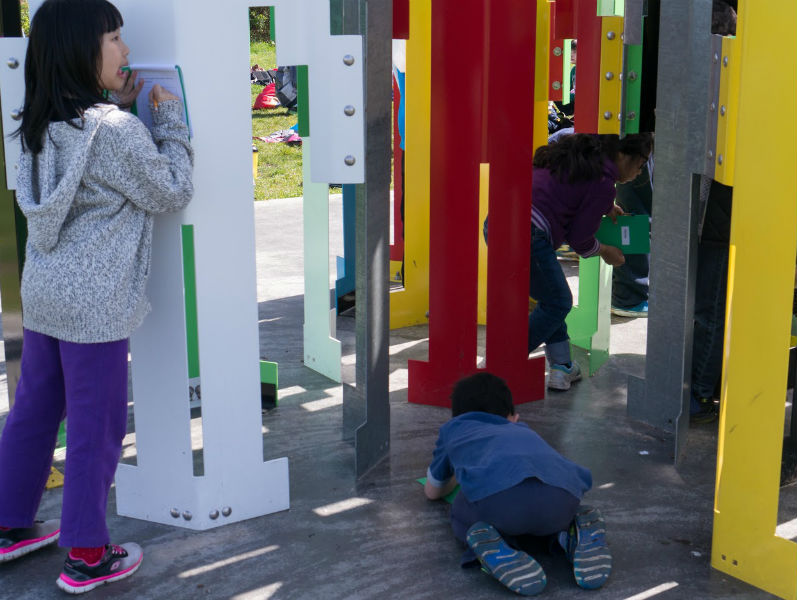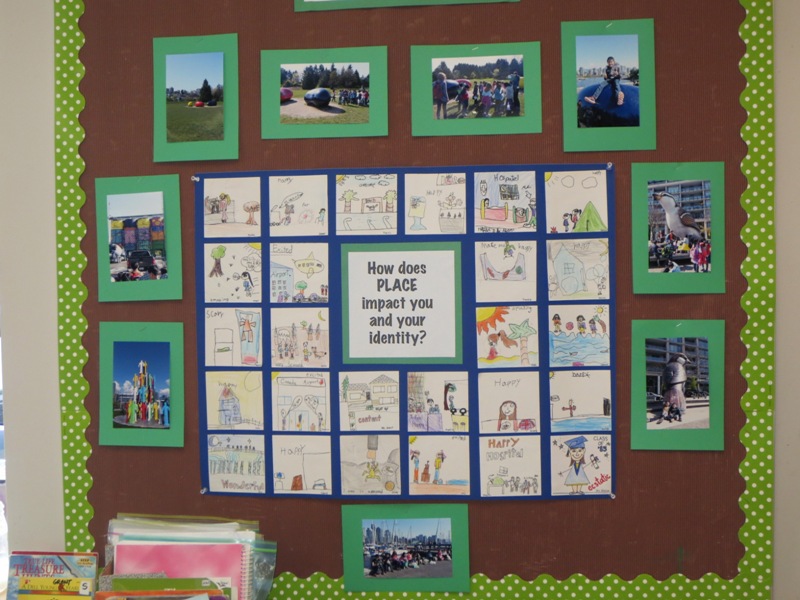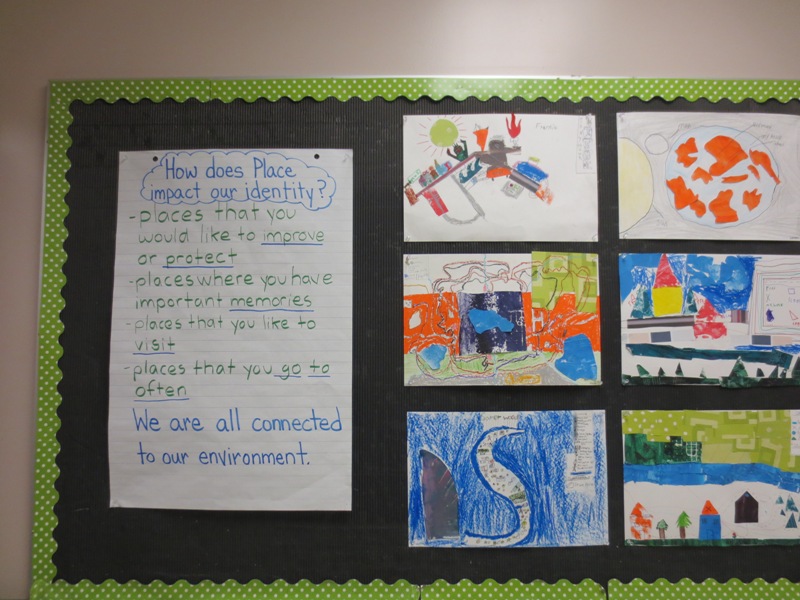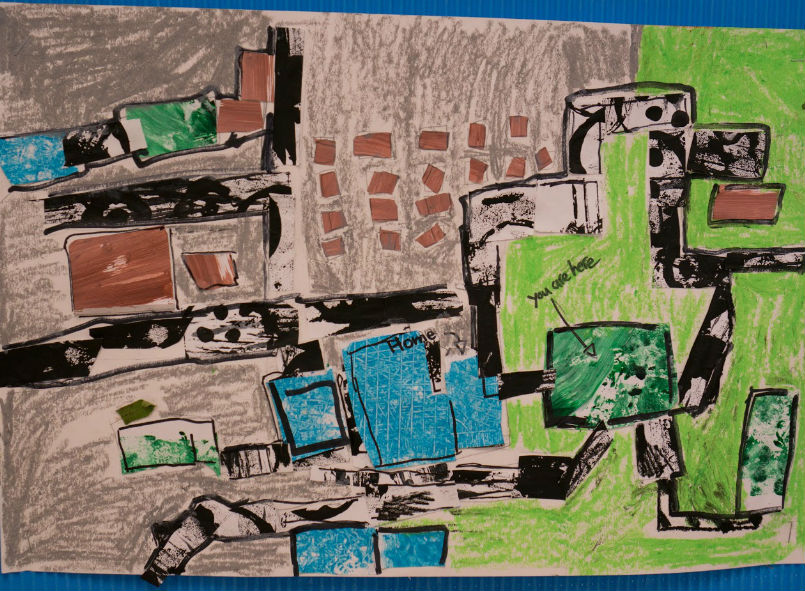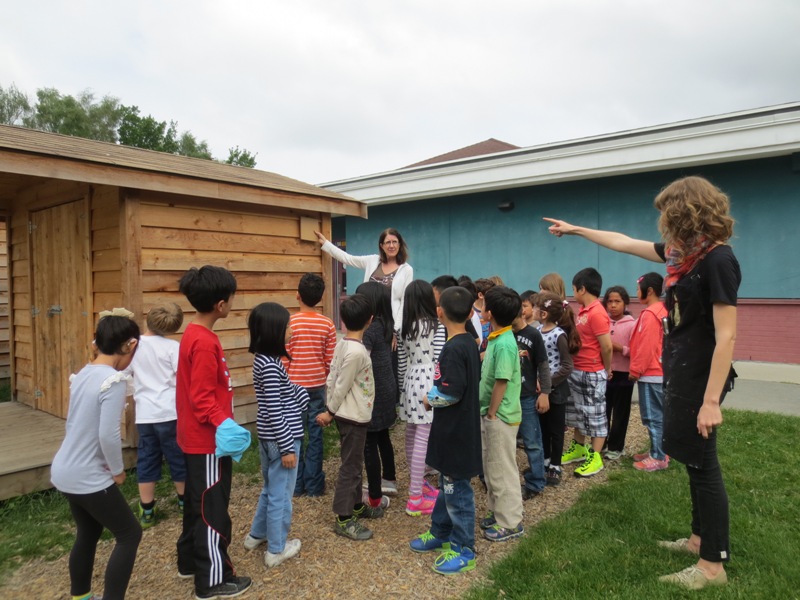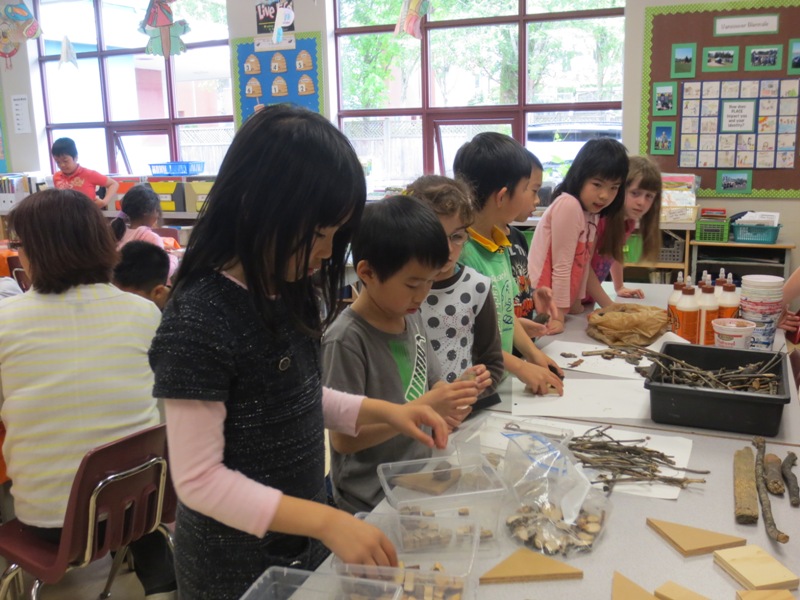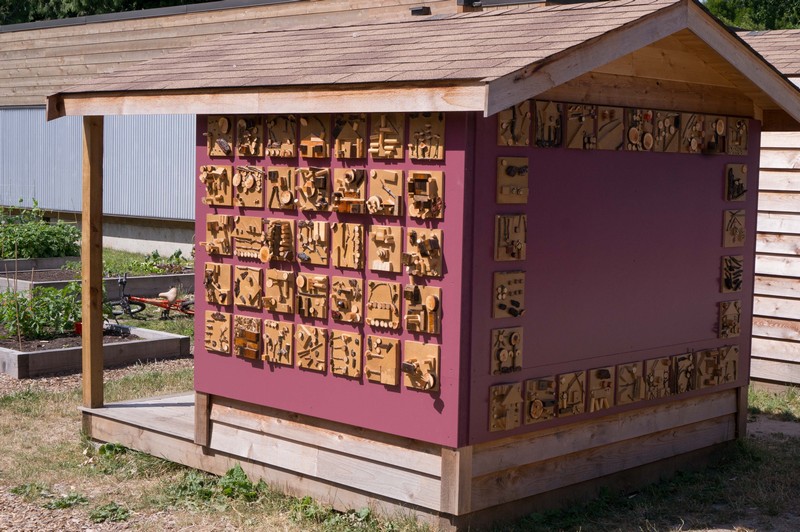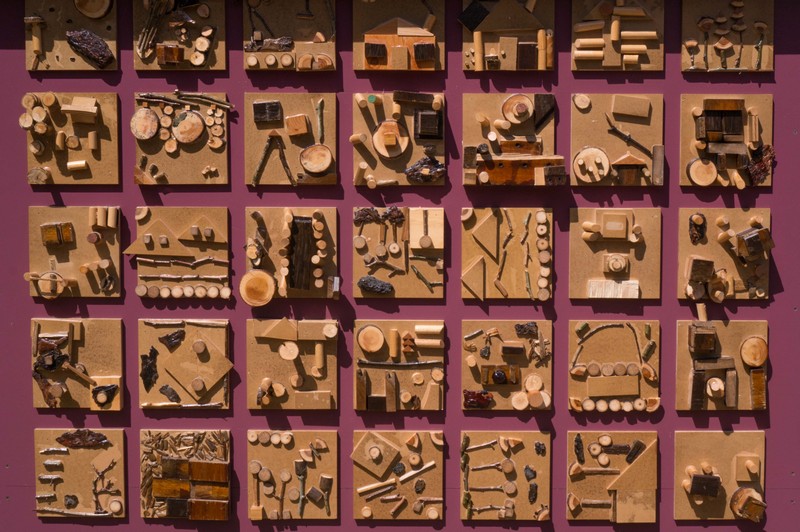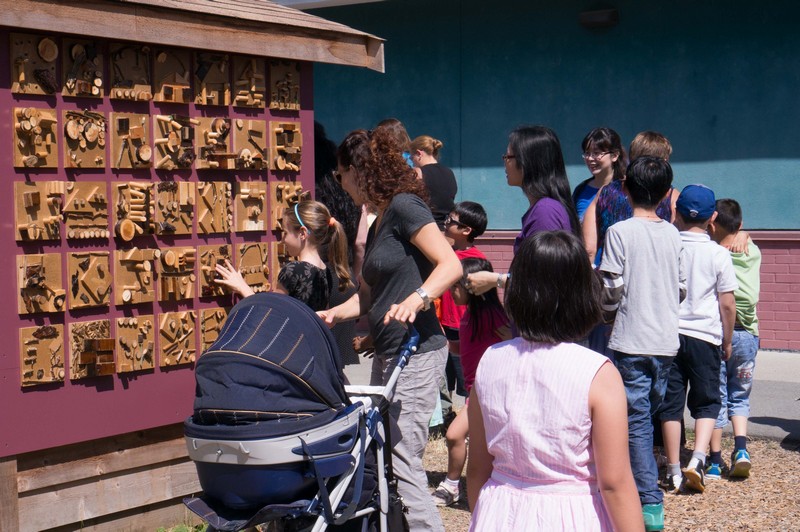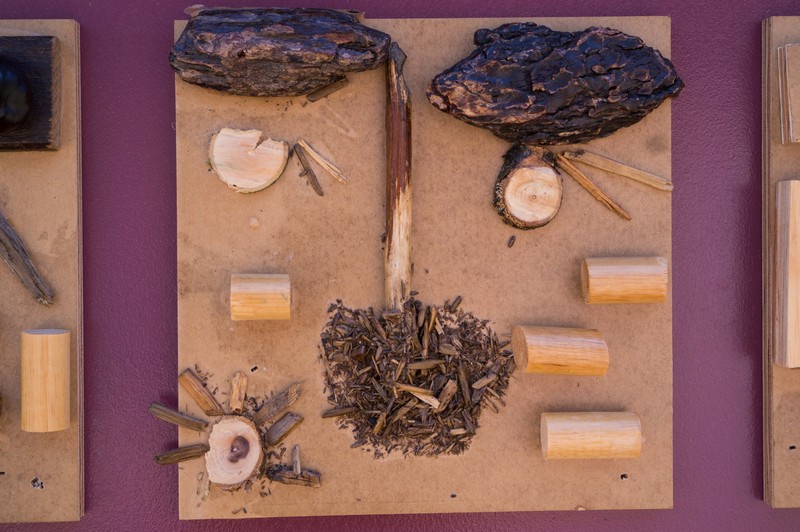General Currie: Cultivating Identity Through the Garden
Arts Education, Language Arts, Mathematics, Planning, Science
School: General Currie Elementary, Richmond
Teacher: Diane McGregor, Ann Augustine, Sherri Boljuncic, Cathy Grant
Artist Collaborators: Amelia Epp
Class: 4 classes Grade 2/3
Overview
This project examined how students can learn about themselves, their interactions with one another, and who they are in relation to the larger community. This project addressed both the current grade 3 social studies curriculum and the redesigned grade 3 social studies curriculum by exploring how cultures are influenced by the local environment and contact with other cultures; and how students’ personal roles, rights, and responsibilities can affect the well-being of the school and community. Students inquired into why individuals have different perspectives on people, place, issues, and events, and how art can connect and unify a community.
Connection to the Vancouver Biennale Exhibition
Students visited Jonathan Borofsky’s Human Structures Vancouver to inquire on how it builds something beyond ourselves, on the strengths of others.
Students were introduced to the Vancouver Biennale 2014-2016 exhibition theme of Open Borders / Crossroads Vancouver and inquire into what it means to move beyond the borders of self and contribute to a larger community.
BIG IDEAS
Understanding self identity leads to positive contributions to the larger groups to which they belong (i.e., school, community).
Pride in oneself and one’s community is fostered through a sense of ownership, appreciation, and connection to place.
Individuals can impact the world in positive ways and in greater ways, with the help of others
Guiding Questions
How does place impact you and your identity?
How does understanding our personal identity help us to appreciate our communities?
What role does diversity play in our communities?
In what ways is community reflected in our surroundings? (i.e., placement and availability of parks, playgrounds, community centres, community structures / art)
What can you do as an individual and as a student to affect the place you live in, in a positive way?
Cross-Curricular Access
Science: Comparing the appearance, life cycle and importance of plants to other living things and to the environment. Discuss: how plants are harvested and used throughout the seasons; how do plants impact their environment; how do plants live together in community; how are plants impacted by place.
Mathematics: Look at statistics about the school / community. Data analysis on items planted in school garden.
Arts Education: Walking field trip to the Richmond Art Gallery / Cultural Centre to begin discussions on how art brings awareness and appreciation of the environment and our surroundings. Observe art within the school that inspires pride / curiosity.
Language Arts: How art can be used to tell a story. What is being communicated through art and what can be interpreted.
Personal Planning: Engaging in games and group activities, in which they need to demonstrate teamwork and cooperation in order to have success.
Learning Process/Inquiry Challenges
Students were introduced to the Vancouver Biennale and to brainstorm a definition of public art
Create BIG IDEA and guiding questions bulletin board
Create collective mind maps relating to big ideas/guiding questions (generating ideas/responses from students)
Students established a sense of identity, by learning about their cultural history and how their family’s past influences the present, and the importance it plays in the identity of the school and community.
Students built an understanding of local community through maps, walking field trips, and examining photos (present day and historical).
Students drew a quick sketch of place in Richmond where something very important/memorable happened to them and wrote one word to describe the feeling/emotion they have when they are in that place.
The drawings were attached and displayed with Big Idea/Guiding Questions mind maps.
Students view drawings and reflect on collective drawing activity
Students examined how their actions affect the environment, and their responsibilities, as mindful citizens, to keeping a ‘healthy’ environment.
Each class built a collection of found natural materials such as grasses, leaves, pine needles, bark, etc. on a walk.
Students explored how different ethnic and aboriginal groups influenced the development of the community / city, and how a cultural mosaic is reflected within the community.
Share First Nations story relating to stewardship of the environment (Richmond specific)
Share information about Coast Salish camps, villages, hunting and collecting areas in Richmond
Show map of Richmond, with specific areas marked (location of historical camps, villages as well as current location of school, etc.)
Introduced to students about Richmond as a land of many peoples. First Nations people were the first to come to the islands to fish and collect berries. The Coast Salish bands were known to have set up temporary camps, and they are said to have had year long dwellings on the islands which were scattered and moved from year to year. There are also reports of villages that existed at one time near Steveston and on Sea Island. (http://www.richmond.ca/discover/about/history.htm)
Discussed mapping as a science and an art form
Shared varied examples of maps (artistic)
Discussed map features
Students created individualized maps of Richmond, indicating specific locations of personal significance and drew these maps on a thick paper or board using pencil. Students embellished the maps using pencil crayons and collage elements (natural materials, textured paper)
Students went on a walk outside and observe patterns/mirroring in nature (veins in leaves, bark, growth of moss on rocks, insect wings, etc.). Students took photos using iPads or drew the patterns that they observe.
Students discussed/shared their drawings/photos of patterns in nature (they were displayed on the wall and/or digital photos could be viewed using projector)
Shared examples of local First Nations art (baskets, woven wool pieces, drawings, prints, paintings, boxes, etc.)
Students were asked about patterns (multiples and mirrored images)
Students brainstormed a list of words to describe their observations of the art (i.e. colours, patterns, motifs)
Students discussed themes explored in the artwork (clan and family crest, nature, transformation, history, beliefs, spirituality)
Students discussed collages and define the word collage as a group
Each student chose an environmental theme and create a collage exploring that theme using patterning, mirroring, etc.
Students created collages on thick paper or mat board using textured paper and natural found objects
Students explored the school garden space amd discussed the placement of their future artwork on the garden shed, and reviewrf the concept of public art.
Review the concept of ‘public art’ and ‘collage’ and previous learning about patterning and mirroring in First Nations art (by viewing the collages they created in the previous session)
Students to think about a specific place in nature in Richmond that is meaningful to them, or a specific plant, animal or insect that is meaningful to them
Students created a collage on a 10”x10” piece of plywood using recycled wood/objects
Students chose the placement of the elements in their collage and glued them down with the assistance of a grade 6 or 7 student.
Student Creation
Plant a school garden: translating the students’ findings into a shared garden space, featuring plants that can be studied, harvested and shared with the community.
Documentation: students create a video / digital book to document the process, their insights and learning experiences.
Mapping their identity. Where do they go in the school and community? What does this say about them as a person?
Group wiki of what contributes to the school’s identity.
Outdoor art installation as part of the school garden
Reflection
Artist – Amelia Epp
I felt that the art making process and big ideas were tied in effectively to the classroom curriculum. We linked the art making to themes that the students were exploring in science, social studies, and language arts. Specifically, the students were exploring pond life and the interconnection of living things. We explored these themes through creating maps, collaged depictions of pond life, and collages of natural environments in Richmond. We discussed local First Nations history, culture and art, which linked to students’ past and present studies.
We could have made more direct linkages between the BIG IDEAS and the Human Structures Vancouver artwork that we visited on our field trip. That being said, the students really enjoyed seeing public artwork on our field trip, and their observations and discussions around the public art did tie into our classroom discussions about ways that we engage with and impact our environments.
